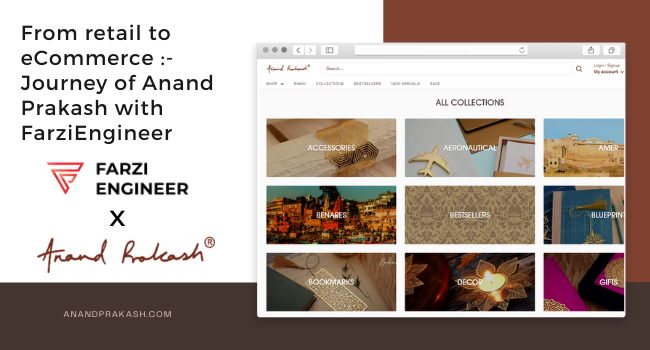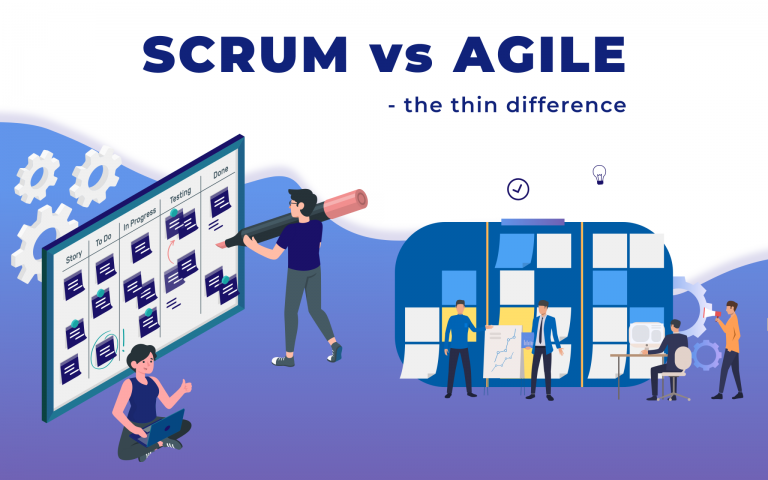A firm can grow enormously by designing a viral referral program that successfully onboards new consumers. In addition to maximising the effectiveness of word-of-mouth advertising, a well-designed referral programme also makes the most of current customers’ excitement for becoming brand evangelists.
Businesses may accelerate their growth and cultivate a devoted customer base by providing alluring incentives, providing flawless user experiences, and using the reach of social networks. We will examine how to design a viral referral program that is excellent at bringing on new clients.
We’ll look at the key components of a successful programme, from the incentives that appeal to customers to the numerous distribution methods and strategies that encourage viral spreading. Businesses may create a self-sustaining development engine that supports client acquisition, brand advocacy, and ultimately long-term success in an increasingly competitive market by understanding the workings of a successful referral programme.
What are the key elements of a successful viral referral program?
A successful viral referral program comprises several essential elements that collectively drive its effectiveness. Firstly, the incentive offered must be sufficiently enticing to spur participants into sharing the program within their networks. Whether it’s discounts, exclusive perks, or tangible rewards, the incentive should be compelling enough to motivate active engagement.
Secondly, the program’s simplicity and ease of use are paramount. When the process of sharing and participating is straightforward, individuals are more likely to take part. Moreover, integrating social sharing mechanisms across various platforms leverages the inherent social nature of people, facilitating seamless and widespread distribution. Incorporating gamified features, like leaderboards and progress tracking, can further boost engagement and foster healthy competition among participants.
As for the viral threshold, a growth rate of roughly 2.35% signifies viral behaviour, indicating that each participant is bringing in multiple new participants. This exponential expansion demonstrates the program’s triumph in achieving organic and extensive reach. Regarding the referral rate, aiming for a referral rate of 20-30% is generally considered favourable, but the exact ideal rate may vary based on industry, target audience, and program specifics.
1. Persuasive Incentives:
A good viral referral program must provide tempting benefits or incentives to both the referrer and the new client. If customers believe the benefits, whether they be discounts, free goods, or privileged access, have significant value, they are more inclined to join and spread the word about the programme.
2. An enjoyable user experience:
To entice customers to participate, the recommendation process must be frictionless and user-friendly. To ensure that consumers can easily refer friends and family, the referral process should be simple, available across a variety of platforms, and not involve many steps.
3. Clear Messaging:
To encourage participation, it is crucial to create appealing messages regarding the referral programme. Effective communication with both current and new consumers is necessary to convey the program’s advantages and how it enhances the overall customer experience.
4. Social Sharing Integration:
The referral program’s ability to spread virally is increased when social sharing tools are integrated into it. Customers’ ability to readily share their referral links on social media platforms allows the program’s reach to grow significantly by drawing on the huge network of their connections.
5. Tracking and Analytics:
For evaluating the program’s performance and pinpointing areas for improvement, it’s essential to implement powerful tracking and analytics tools. Businesses may improve their strategy, maximise conversions, and continuously improve the referral program’s efficiency at enrolling new clients by keeping an eye on the success indicators.
How can you incentivize existing customers to refer new customers effectively?
A viral referral programs effectiveness for onboarding depends on its ability to effectively reward existing customers who suggest new ones. Businesses can encourage customers to actively participate in the recommendation process by providing alluring incentives like discounts, special access to products, or loyalty points.
Additionally, personalization is essential since it allows incentives to be tailored to specific client preferences and behaviours. Furthermore, encouraging consumers to share their positive experiences by recognising and praising successful referrals can help build a sense of community and belonging.
Incentives become effective referral programme drivers when they are in line with consumer interests and are smoothly included. This increases the program’s virality and increases the number of new customers it may bring in.
What role does social media play in boosting a referral program's virality?
- Because social media platforms have such a large network of potential clients, the referral programme can reach more people and become more viral.
- Easy sharing of referral links is made possible by social media, making it simple for current customers to spread the word about the programme to their connections and followers.
- Positive customer testimonials posted on social media serve as social proof, fostering a culture of confidence and enticing others to join the referral programme.
- Social media users might be enthralled by creative and interesting information about the referral programme, encouraging them to take action and join the programme.
- Collaboration with social media influencers can greatly increase the program’s visibility since their suggestions have a big impact on their following.
- Social media platforms enable instant feedback and engagement, allowing businesses to address concerns or issues promptly, enhancing the program’s credibility.
- If the referral programme becomes a hot issue on social media, engagement may skyrocket and a viral impact may result.
- Social media helps customers feel more connected to one another, encouraging word-of-mouth advertising and building brand loyalty, all of which help the referral programme succeed.
What are the best practices for promoting your referral program to a wider audience?
- Clear Communication: Through various marketing platforms, clearly explain the rewards and motivations of the referral programme to both current and potential new consumers.
- Utilize Email Marketing: Utilise your email contact list to spread the word about the referral programme by sending out personalised invites and follow-up reminders.
- Engaging Website Placement: Use eye-catching banners or pop-ups to bring attention to the referral programme on your website and encourage sign-ups.
- Social Media Promotion: Promote the referral programme aggressively across all social media channels by posting interesting material, endorsements, and success tales to inspire sharing.
- Incentivize Both Referrer and Referee: Create a win-win situation by providing all parties with enticing incentives, encouraging active engagement.
- Partner with Influencers: Work together with influencers in your sector to expand your audience and gain access to the networks of their followers.
- Referral Contests or Challenges: Create referral challenges or competitions with enticing prizes to inspire customers to suggest their friends and family.
- Referral Program Advocates: Find and cultivate brand ambassadors among your current clientele so they can naturally spread the word about the referral programme to other people, expanding its reach.
By putting these best practises into practise, companies can effectively market their referral programme to a larger audience, boosting its virality and drawing in new clients while developing a sense of community and brand loyalty.
How can you leverage influencer marketing to enhance your referral program's impact?
By utilising the influencer’s credibility and reach, influencer marketing can greatly increase the impact of your referral programme. By collaborating with important industry influencers, you may take advantage of their devoted following and power, which may encourage new clients to take part in your referral programme.
Influencers can produce real and compelling material about their satisfying interactions with your company, inspiring their audience to believe in and participate in your referral programme. Their support can also create a sense of urgency, encouraging potential customers to act right away and engage in active referrals that promote the program’s viral growth.
You may easily create a viral referral program that excels at onboarding new customers by leveraging the power of influencer marketing to increase your referral program’s awareness, reach, and ultimately customer acquisition rates.
How do you track and measure the performance of a viral referral program?
Step : 1
Define Key Performance Indicators (KPIs): Identify the specific metrics that align with your referral program’s goals, such as the number of successful referrals, conversion rates, customer acquisition cost, and overall revenue generated from the program.
Step : 2
Implement Tracking Tools: Integrate reliable tracking tools or software to monitor the performance of your referral program. These tools can help you capture data on referral links, user behavior, and conversions.
Step : 3
Unique Referral Links: Assign unique referral links to each referrer to track the source of new customer sign-ups accurately. This ensures you can attribute referrals correctly and measure the impact of individual referrers.
Step : 4
Utilize Analytics Platforms: Leverage analytics platforms like Google Analytics or custom-built dashboards to analyze and interpret the data collected from your referral program.
Step : 5
A/B Testing: To identify the factors that are producing the best results and adjust the programme as necessary, conduct A/B testing with various incentive structures, referral designs, or advertising techniques.
Step : 6
Monitor Referral Sources: Examine the channels from which your referrals are coming, including social media, email, your website, and other sources. Your marketing efforts can be directed by being aware of the most efficient channels.
Step : 7
Determine the long-term effects of the referral programme on customer retention and profitability by comparing the Customer Lifetime Value (CLV) of referred customers to those of non-referred ones.
Step : 8
Continuous Evaluation and Improvement: Review the metrics and data frequently to evaluate the effectiveness of the programme. Make data-driven tweaks and enhancements based on the learned insights to maximise the program’s performance.
Conclusion
In conclusion, a carefully designed viral referral program is a game-changer for companies looking to attract new clients and encourage quick expansion. Companies can establish a self-sustaining cycle of customer acquisition by utilising the passion of existing consumers and the power of word-of-mouth marketing.
Customers are more likely to actively participate in referral programmes and spread the word about a company when there are alluring incentives available and the user experience is flawless.Businesses can make data-driven adjustments to their referral programme as they monitor and evaluate its success to optimise its impact.
Continuous customer acquisition is fueled by consistent promotion across a variety of channels and creative initiatives. In the end, a successful viral referral program fosters a network of devoted brand champions in addition to facilitating the onboarding of new customers. Businesses may unleash the full potential of their client base and achieve amazing development in a highly competitive environment by embracing the art of creating a viral referral program.




